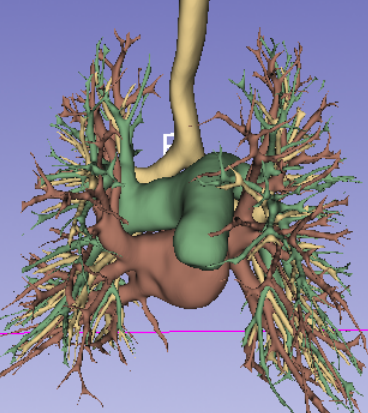首页 > 志趣人生 > Ubuntu系统Ubuntu系统
Ubuntu系统在"grub>" 模式下确定根分区的盘符
Ubuntu系统grub模式下使用教程(three)
方法一:查看/etc/fstab文件(最可靠)
grub> cat (hd0,msdos3)/etc/fstab
输出示例:
# /etc/fstab: static file system information. # # Use 'blkid' to print the universally unique identifier for a # device; this may be used with UUID= as a more robust way to name devices # that works even if disks are added and removed. See fstab(5). # # <file system> <mount point> <type> <options> <dump> <pass> # / was on /dev/sda3 during installation UUID= / ext4 errors=remount-ro 0 1 # /boot/efi was on /dev/sda1 during installation UUID=ABCD-1234 /boot/efi vfat umask=0077 0 1 # swap was on /dev/sda2 during installation UUID=87654321-4321-4321-4321-cba987654321 none swap sw 0 0
关键信息:
根分区通常是
/dev/sda3(在示例中)UUID信息用于更精确的识别
方法二:查看/proc/cmdline(如果可访问)
grub> cat (hd0,msdos3)/proc/cmdline
输出示例:
BOOT_IMAGE=/boot/vmlinuz-6.14.0-27-generic root=UUID=12345678-1234-1234-1234-123456789abc ro quiet splash
关键信息:
root=UUID=...或root=/dev/sda3显示根分区
方法三:查看/boot/grub/grub.cfg文件
grub> cat (hd0,msdos3)/boot/grub/grub.cfg
查找关键行:
# 搜索包含root=的行 grub> grep "root=" (hd0,msdos3)/boot/grub/grub.cfg
输出示例:
linux /boot/vmlinuz-6.14.0-27-generic root=UUID=12345678-1234-1234-1234-123456789abc ro quiet splash
方法四:使用GRUB的search命令
搜索UUID
# 搜索根分区的UUID grub> search --fs-uuid --set=root 12345678-1234-1234-1234-123456789abc
搜索设备文件
# 搜索/dev/sda3 grub> search --file --set=root /dev/sda3
方法五:检查/etc/mtab文件
grub> cat (hd0,msdos3)/etc/mtab
输出示例:
/dev/sda3 / ext4 rw,relatime,errors=remount-ro 0 0 proc /proc proc rw,nosuid,nodev,noexec,relatime 0 0 sysfs /sys sysfs rw,nosuid,nodev,noexec,relatime 0 0
方法六:查看/etc/hostname和系统信息
# 查看主机名确认这是正确的系统 grub> cat (hd0,msdos3)/etc/hostname # 查看系统版本 grub> cat (hd0,msdos3)/etc/os-release
方法七:使用parttool命令查看分区信息
# 查看分区详细信息 grub> parttool (hd0,msdos3) print
输出示例:
Partition 3: start=123456, size=987654, type=0x83 (Linux)
方法八:检查分区大小和类型
# 列出分区并查看大小 grub> ls -l (hd0,msdos1)/ grub> ls -l (hd0,msdos2)/ grub> ls -l (hd0,msdos3)/
根分区特征:
通常最大
包含完整的Linux目录结构
包含/boot目录
方法九:使用blkid信息(如果存在)
# 查看blkid信息 grub> cat (hd0,msdos3)/etc/blkid.tab
方法十:检查/etc/passwd确认系统
# 查看用户列表确认这是正确的系统 grub> cat (hd0,msdos3)/etc/passwd
快速确认流程
步骤1:快速检查fstab
grub> cat (hd0,msdos3)/etc/fstab | grep " / "
步骤2:验证UUID
# 从fstab中提取UUID
grub> cat (hd0,msdos3)/etc/fstab | grep " / " | awk '{print $1}'步骤3:使用UUID启动
# 使用UUID启动更可靠 grub> linux /boot/vmlinuz-6.14.0-27-generic root=UUID=12345678-1234-1234-1234-123456789abc ro grub> initrd /boot/initrd.img-6.14.0-27-generic grub> boot
最可靠的方法组合
推荐流程:
首先检查fstab:
grub> cat (hd0,msdos3)/etc/fstab
提取根分区信息:
# 查找根分区的UUID或设备名 grub> cat (hd0,msdos3)/etc/fstab | grep " / "
使用UUID启动(最可靠):
grub> set root=(hd0,msdos3) grub> linux /boot/vmlinuz-6.14.0-27-generic root=UUID=12345678-1234-1234-1234-123456789abc ro grub> initrd /boot/initrd.img-6.14.0-27-generic grub> boot
故障排除
如果fstab文件损坏:
# 尝试其他方法 grub> cat (hd0,msdos3)/proc/cmdline grub> cat (hd0,msdos3)/boot/grub/grub.cfg | grep "root="
如果UUID不确定:
# 使用设备名启动 grub> linux /boot/vmlinuz-6.14.0-27-generic root=/dev/sda3 ro grub> initrd /boot/initrd.img-6.14.0-27-generic grub> boot
总结:cat (hd0,msdos3)/etc/fstab 确实是最可靠的方法,因为它直接显示了系统的挂载配置。结合UUID使用可以确保启动的准确性。
3
0












快快抢占沙发吧!